Introduction to Sugar with Tea
Introduction
Sugar is a quintessential companion to tea, enhancing its flavor and adding a touch of sweetness to every sip. Whether you prefer a delicate green tea, a robust black tea, or an aromatic herbal blend, the addition of sugar can transform the drinking experience, balancing the tea’s natural bitterness and accentuating its nuanced flavors. In this guide, we’ll explore the art of pairing sugar with tea, discussing different types of sugar, the best methods for sweetening tea, and how to strike the perfect balance to suit your taste preferences. Join us as we delve into the delightful world of sugar and tea, where every cup becomes a symphony of flavor and indulgence.
Benefits of adding sugar to tea
Adding sugar to tea can have several benefits that enhance its taste and overall experience. Some of the advantages of sweetening your tea with sugar include:
- Enhanced flavor: Sugar adds a pleasant sweetness to tea, balancing its bitterness and astringency. This can make the tea more enjoyable and appealing to a wider range of palates.
- Increased energy: Sugar is a source of carbohydrates, which can provide a quick boost of energy. Adding a spoonful of sugar to your tea can give you a little extra fuel to get through your day.
- Improved mood: The sweetness of sugar can have a positive impact on your mood by triggering the release of serotonin, a neurotransmitter associated with feelings of pleasure and well-being. This can help create a sense of comfort and relaxation when enjoying your cup of tea.
Different types of sugar commonly used in tea
There are various types of sugar that are commonly used to sweeten tea. Each type offers a slightly different taste profile and sweetness level. Here are some of the most commonly used sugars for tea:
| Sugar Type | Description |
|---|---|
| Granulated sugar | This is the most common type of sugar, often derived from sugar cane or sugar beets. It has a neutral taste and dissolves easily in hot tea. |
| Raw sugar | Also known as turbinado sugar, it is less processed than granulated sugar and retains some of its natural molasses. It has a slightly caramel-like flavor and adds depth to the tea’s taste. |
| Honey | While not technically a sugar, honey is a popular natural sweetener for tea. It has a distinct floral taste and can enhance the flavors of certain teas, such as herbal and floral varieties. |
| Brown sugar | This sugar has a higher molasses content than granulated sugar, giving it a richer flavor and slightly sticky texture. It pairs well with black teas and adds a touch of caramel sweetness. |
Ultimately, the choice of sugar depends on personal preference and the desired flavor profile. Experimenting with different types of sugar can help you find the perfect balance and sweetness for your cup of tea.
Finding the Perfect Sugar-to-Tea Ratio
Experimentation and personal preference
When it comes to finding the perfect sugar-to-tea ratio, experimentation is key. The amount of sugar you add to your tea can greatly impact its taste, so it’s important to find a balance that suits your personal preference. Some people prefer their tea with just a hint of sweetness, while others enjoy a more sugary taste. Trying different amounts of sugar and gradually adjusting the quantity can help you find the perfect level of sweetness for your cup of tea.
Factors to consider when determining the right amount of sugar
There are a few factors to consider when determining the right amount of sugar to add to your tea. These include the type of tea, personal taste, and any dietary restrictions or preferences you may have. For example, stronger teas like black tea may require a bit more sugar to balance out their bold flavor, while lighter teas like green or white tea may only need a touch of sweetness.
It’s also important to be mindful of any dietary restrictions or health concerns you may have. If you’re watching your sugar intake, you may want to opt for a sugar substitute or reduce the amount of sugar you add to your tea. Similarly, if you prefer a more natural sweetener, options like honey or agave nectar can be used instead of traditional granulated sugar.
Ultimately, finding the perfect sugar-to-tea ratio is a personal journey. It may take some trial and error to discover the right amount of sweetness that suits your taste buds. Remember to take into account the type of tea you’re using, any dietary restrictions, and most importantly, your own personal preference. So go ahead and experiment with different sugar amounts until you find your ideal cup of tea.
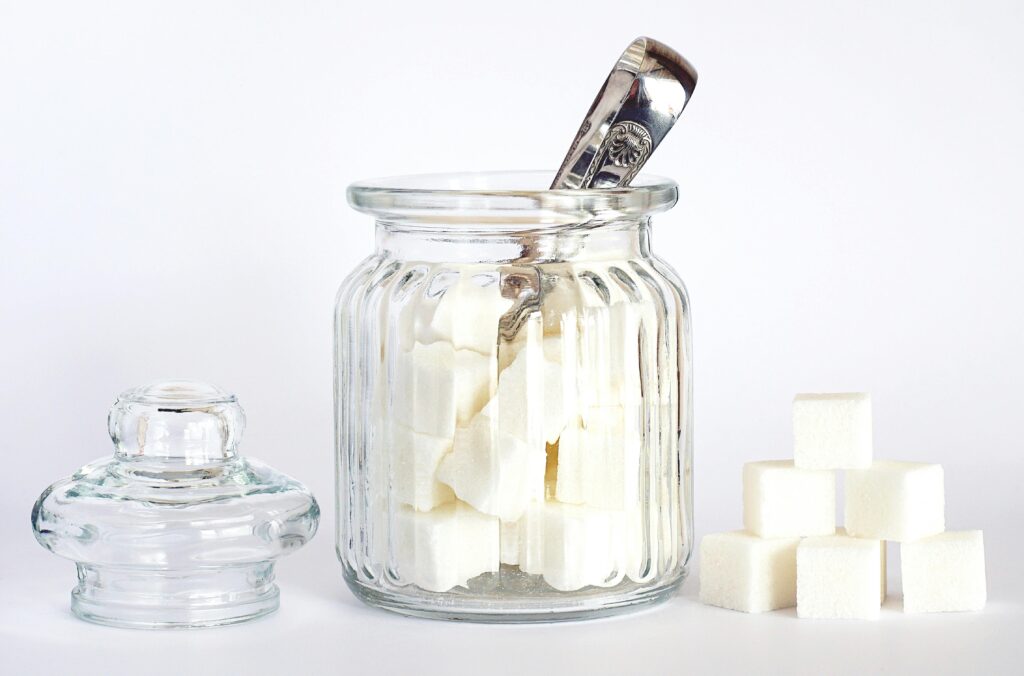


Traditional White Sugar
Overview and properties of white sugar
White sugar, also known as table sugar, is the most common type of sugar used to sweeten tea. It is produced from sugarcane or sugar beets and undergoes a refining process to remove impurities. White sugar is known for its fine granular texture and neutral flavor.
Effect of white sugar on tea taste and texture
When added to tea, white sugar dissolves quickly due to its fine texture. It provides a straightforward sweetness without adding any additional flavor or aroma. The amount of white sugar added can impact the overall taste and texture of the tea. Here are some factors to consider when using white sugar:
- Sweetness level: The amount of white sugar used can affect the level of sweetness in the tea. Adding more sugar will result in a sweeter cup of tea, while using less will give a milder sweetness.
- Mouthfeel: White sugar can give a smooth and silky mouthfeel to the tea. It helps balance any bitterness or astringency in certain types of teas.
- Dissolving time: Due to its fine texture, white sugar dissolves quickly in hot tea, requiring minimal stirring or waiting time.
- Clumping: If not properly stored, white sugar can clump together due to moisture. It is important to keep it in an airtight container in a cool, dry place to prevent clumping.
In conclusion, traditional white sugar is a popular choice for sweetening tea due to its neutral flavor and fine texture. It can easily be adjusted to achieve the desired level of sweetness and provides a smooth mouthfeel. However, individuals with dietary restrictions or health concerns may consider alternative sweeteners or reducing the amount of sugar added. Experimentation and personal preference are key in finding the perfect sugar-to-tea ratio that suits your taste buds.
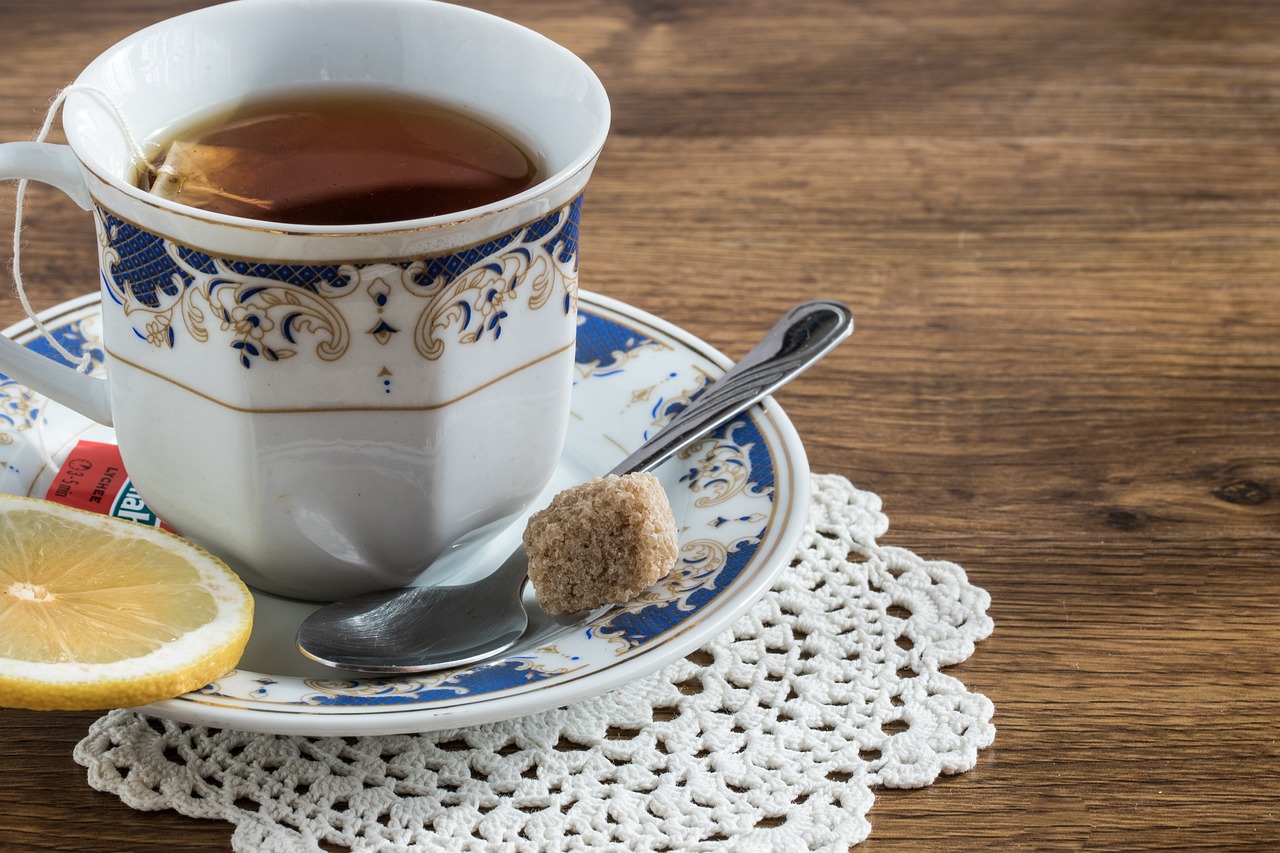


Natural Alternatives to White Sugar
Honey as a natural sweetener for tea
Honey is a popular natural alternative to white sugar when it comes to sweetening tea. It is produced by bees from the nectar of flowers and comes in various forms such as raw honey and honeycomb. Here are some key points to consider when using honey as a sweetener for tea:
- Sweetness level: Honey adds a distinct, floral sweetness to tea. The amount of honey can be adjusted to achieve the preferred level of sweetness.
- Flavor profile: Depending on the type of honey used, it can impart different flavors to the tea, such as floral, fruity, or earthy notes.
- Texture: Honey has a thick and sticky texture, which adds a rich and creamy mouthfeel to the tea.
- Dissolving time: Honey may take longer to dissolve in hot tea compared to white sugar. It is recommended to stir the tea thoroughly to ensure even distribution of sweetness.
- Nutritional benefits: Raw honey contains trace amounts of vitamins, minerals, and antioxidants, making it a healthier option compared to refined white sugar.
Stevia and its benefits as a sugar substitute in tea
Stevia is a natural sweetener derived from the leaves of the Stevia rebaudiana plant. It is known for its intense sweetness and zero-calorie content. Here are some key points to consider when using stevia as a sugar substitute in tea:
- Sweetness level: Stevia is significantly sweeter than white sugar, so only a small amount is needed to achieve the desired sweetness in tea.
- Flavor profile: Stevia has a slightly herbal or licorice-like taste, which can be noticeable in some teas. It is important to choose a high-quality stevia product to minimize any aftertaste.
- Texture: Stevia does not contribute to the texture of tea as it dissolves easily without adding any thickness or viscosity.
- Health benefits: Stevia is a popular choice for individuals with diabetes or those looking to reduce their sugar intake. It has no impact on blood sugar levels and is considered safe for consumption.
In conclusion, honey and stevia are natural alternatives to traditional white sugar when it comes to sweetening tea. Both offer unique flavors and characteristics that can enhance the taste and texture of tea. Experimenting with different sweeteners and adjusting the amount based on personal preference can result in a perfectly sweetened cup of tea without the need for refined sugar.
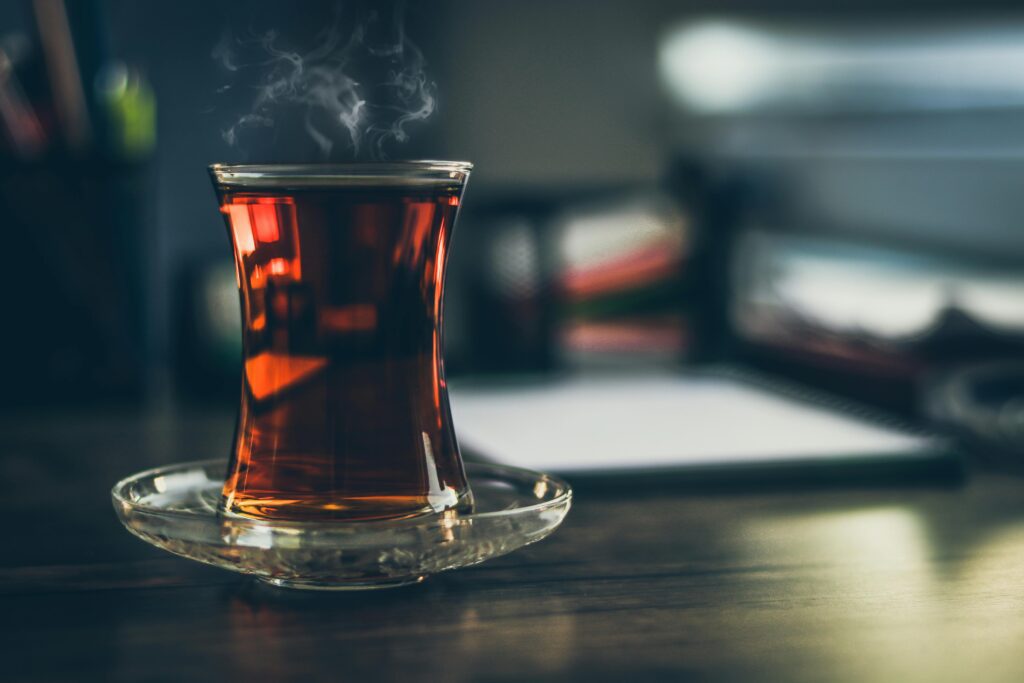


Specialty Sugars for Unique Flavors
Demerara sugar for a hint of caramel flavor
Demerara sugar adds a delightful touch of caramel flavor to tea, making it a popular choice among enthusiasts. Extracted from evaporated cane juice, it boasts large, golden-brown crystals that enhance both the taste and texture of your brew. Here’s what you need to know about using Demerara sugar in tea:
- Flavor Profile: With its rich and robust flavor profile, Demerara sugar introduces subtle hints of molasses and caramel, elevating the taste of your tea to new heights.
- Texture: The large crystals of Demerara sugar offer a satisfying crunch, adding an extra dimension to your tea-drinking experience.
- Sweetness Level: Slightly less sweet than white sugar, Demerara sugar may require a touch more to achieve your desired level of sweetness.
- Dissolving Time: Due to its larger crystal size, Demerara sugar may take a bit longer to dissolve fully in hot tea. Simply stir a little longer for even sweetness distribution.
- Versatility: Beyond tea, Demerara sugar proves versatile, adding its unique flavor profile to coffee, desserts, and cocktails alike.
Turbinado sugar and its distinct taste in tea
Turbinado sugar offers a unique flavor profile to tea, distinct from standard sweeteners. Crafted from partially refined sugarcane juice, it boasts a light brown hue with medium-sized crystals. Here’s what you should know about incorporating Turbinado sugar into your tea:
- Flavor Profile: With its mild, molasses-like flavor, Turbinado sugar adds a gentle sweetness and a hint of caramel to your tea, though it’s less intense than Demerara sugar.
- Texture: Turbinado sugar features crystals larger than white sugar but smaller than Demerara sugar, ensuring easy dissolution in hot tea, providing convenience as a sweetener.
- Sweetness Level: Slightly sweeter than white sugar, Turbinado sugar often requires less quantity to reach your desired sweetness level.
- Nutritional Benefits: Retaining trace minerals from sugarcane, Turbinado sugar offers a slightly healthier alternative to white sugar.
- Versatility: Beyond tea, Turbinado sugar proves adaptable, finding utility in baking, as toppings for oatmeal or cereal, and as a mixer for various beverages.
Incorporating specialty sugars like Demerara and Turbinado can offer unique flavors and textures to tea. Experimenting with different options and discovering the perfect sugar to match your taste preferences can elevate your tea-drinking experience.
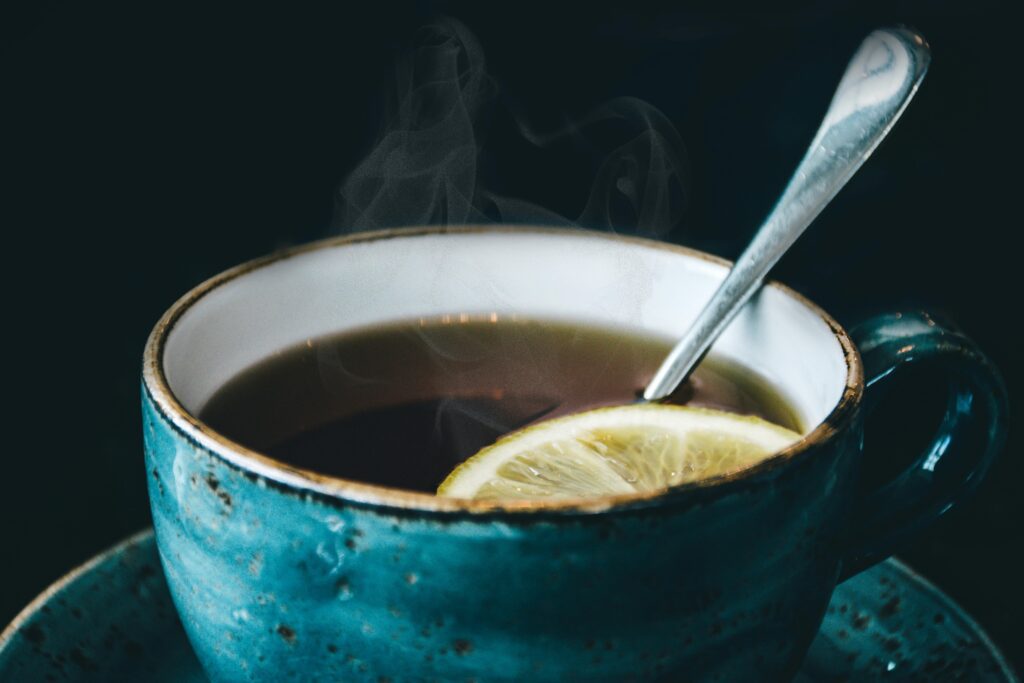


Powdered Sugar in Tea
Using powdered sugar instead of granulated sugar
Powdered sugar, also known as confectioner’s sugar or icing sugar, is another option for sweetening tea. It is made by grinding granulated sugar into a fine powder and adding a small amount of cornstarch to prevent clumping. Here are some important points to consider when using powdered sugar in tea:
- Ease of dissolving: Powdered sugar dissolves quickly in hot tea, making it a convenient choice. The fine texture allows it to blend smoothly, ensuring even sweetness throughout the tea.
- Sweetness level: Powdered sugar is generally sweeter than granulated sugar, so you may need to use less to achieve the desired level of sweetness. It is advisable to start with a smaller amount and adjust according to taste.
- Texture: Using powdered sugar gives tea a smoother appearance and texture. It can create a velvety mouthfeel that some tea enthusiasts find appealing.
- Suitable for hot and cold beverages: Powdered sugar can be used in both hot and cold tea. It easily dissolves in cold beverages, making it a versatile option for sweetening iced tea as well.
- Versatility in recipes: Apart from tea, powdered sugar is commonly used in baking recipes for frosting, glazes, and dusting. Its fine texture allows it to integrate seamlessly into various culinary applications.
Advantages and disadvantages of powdered sugar in tea
Powdered sugar offers several advantages when used in tea, including quick dissolving, enhanced sweetness, and versatility in both hot and cold beverages. However, there are also some disadvantages to consider:
Advantages:
- Quick dissolving: Powdered sugar dissolves rapidly in hot or cold tea, ensuring even sweetness throughout the beverage.
- Enhanced sweetness: The fine texture of powdered sugar allows for a more concentrated level of sweetness compared to granulated sugar.
- Versatility: Powdered sugar can be used in a variety of tea recipes as well as in baking and other culinary applications.
Disadvantages:
- Clumping: If not stored properly, powdered sugar can clump or harden, making it less convenient to use.
- Texture alteration: The addition of powdered sugar can slightly change the texture of tea, giving it a smoother appearance and mouthfeel that may not be preferred by everyone.
- Limited nutritional benefits: As with other refined sugars, powdered sugar lacks significant nutritional value and should be consumed in moderation.
In conclusion, powdered sugar provides a convenient and versatile option for sweetening tea. Its fine texture allows for quick dissolving and concentrated sweetness. While there are some disadvantages, such as clumping and limited nutritional benefits, the choice to use powdered sugar ultimately depends on personal preference and the desired taste and texture of the tea.
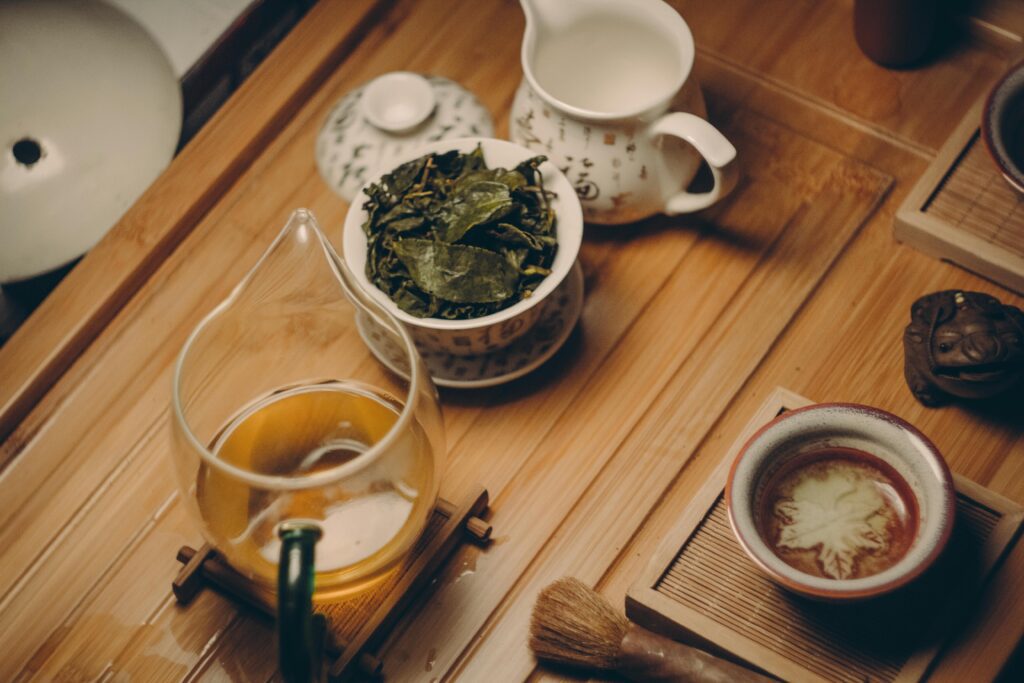


Brown Sugar for Richness and Depth
Unique flavor profile of brown sugar in tea
Brown sugar is a popular alternative to granulated sugar when it comes to sweetening tea. It is made by simply adding molasses back into refined white sugar, resulting in its distinct caramel-like flavor. Here are some key points to consider when using brown sugar in tea:
- Rich flavor: The molasses in brown sugar adds a depth of flavor that can enhance the overall taste of tea. It brings a subtle sweetness with hints of caramel and toffee, creating a more complex and indulgent drinking experience.
- Warm and comforting: The flavor profile of brown sugar lends itself well to teas that have earthy tones or are on the stronger side, such as black tea or spiced tea blends. It can impart a warm and comforting element to the beverage.
- Less sweetness: Brown sugar is generally less sweet compared to granulated sugar. This means you may need to use a slightly larger amount to achieve the desired level of sweetness. It is recommended to start with a smaller quantity and adjust according to personal taste preferences.
Experimenting with different types of brown sugar
When it comes to brown sugar, there are different varieties to explore, each with its own unique characteristics. Here are a few types to consider trying in your tea:
- Light brown sugar: This variety has a milder flavor and lighter color compared to other types. It adds a subtle sweetness without overpowering the tea’s natural flavors.
- Dark brown sugar: With a deeper and more intense flavor, dark brown sugar can provide a rich and robust taste to tea. It pairs well with full-bodied teas and can add a touch of molasses-like sweetness.
- Raw brown sugar: Also known as turbinado or demerara sugar, this type retains more of its natural molasses content. It has a coarser texture and a slightly more complex flavor profile, making it a great choice for those looking for a unique twist in their tea.
In conclusion, using brown sugar in tea adds depth and richness to the overall flavor profile. Its caramel and toffee-like notes can enhance teas with earthy or strong characteristics. By experimenting with different types of brown sugar, you can further personalize and elevate your tea-drinking experience.
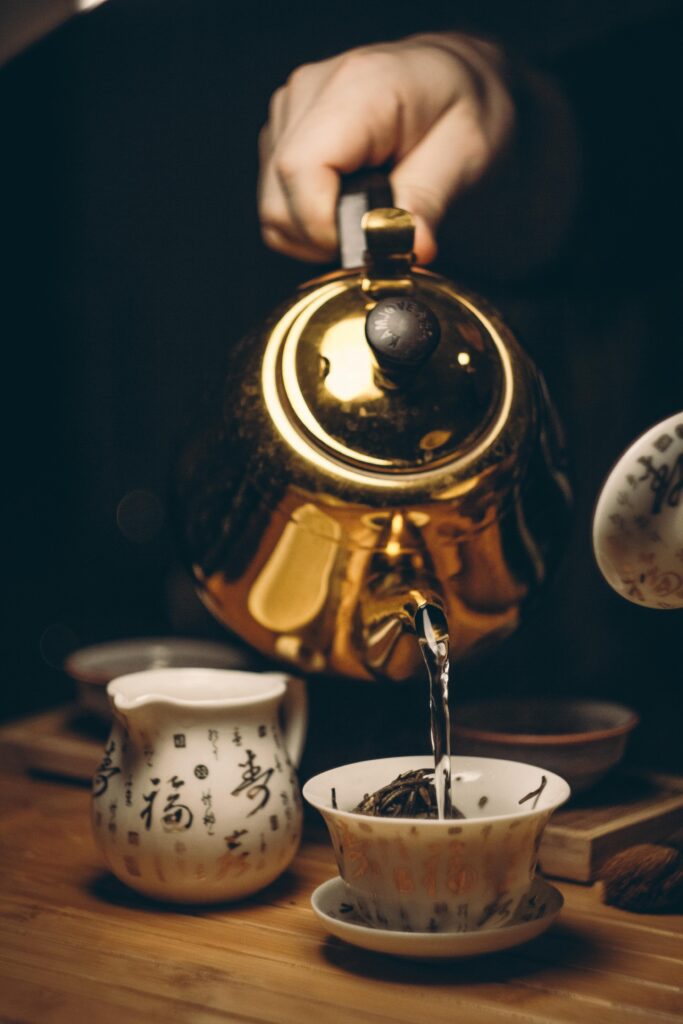


Enhancing Tea with Flavored Sugars
Infusing sugar with herbs, spices, or extracts for added flavor
When it comes to sweetening tea, flavored sugars can take your beverages to the next level by adding unique and delicious tastes. One way to achieve this is by infusing your sugar with herbs, spices, or extracts. Here are a few key points to consider:
- Herbs: Adding dried herbs like lavender, mint, or chamomile to your sugar can impart floral and refreshing flavors to your tea. Simply mix the herbs with the sugar and let it infuse for a week before using it in your beverages.
- Spices: Spice-infused sugars can add warmth and complexity to your tea. Common options include cinnamon, cardamom, or ginger. To make spiced sugar, mix the desired spice with your sugar and let it sit for a few days to allow the flavors to develop.
- Extracts: Extracts like vanilla, almond, or coconut can give your tea a decadent twist. Add a few drops of your chosen extract to the sugar and mix well. Allow the mixture to dry before using it in your tea.
Popular options for flavored sugars in tea
If you’re looking for ready-made flavored sugars to enhance your tea, here are some popular options to consider:
- Vanilla sugar: This sweet and fragrant sugar is infused with natural vanilla bean and can add a subtle vanilla flavor to your tea.
- Lemon sugar: Made by combining lemon zest with sugar, this citrusy option can brighten up herbal teas or add a refreshing twist to black or green teas.
- Ginger sugar: With a hint of spicy warmth, ginger sugar can complement herbal teas or add a kick to black teas.
- Rose sugar: Infused with dried rose petals, this floral sugar can add a delicate and romantic touch to your tea.
- Mint sugar: Perfect for refreshing herbal teas, mint sugar adds a cool and invigorating flavor to your beverages.
In conclusion, flavored sugars offer an exciting way to elevate the flavor of your tea. Whether you prefer infusing your own sugar with herbs and spices or trying out pre-made options, these additions can transform your tea-drinking experience. Experiment with different flavors to find your favorites and enjoy a personalized and indulgent tea break.
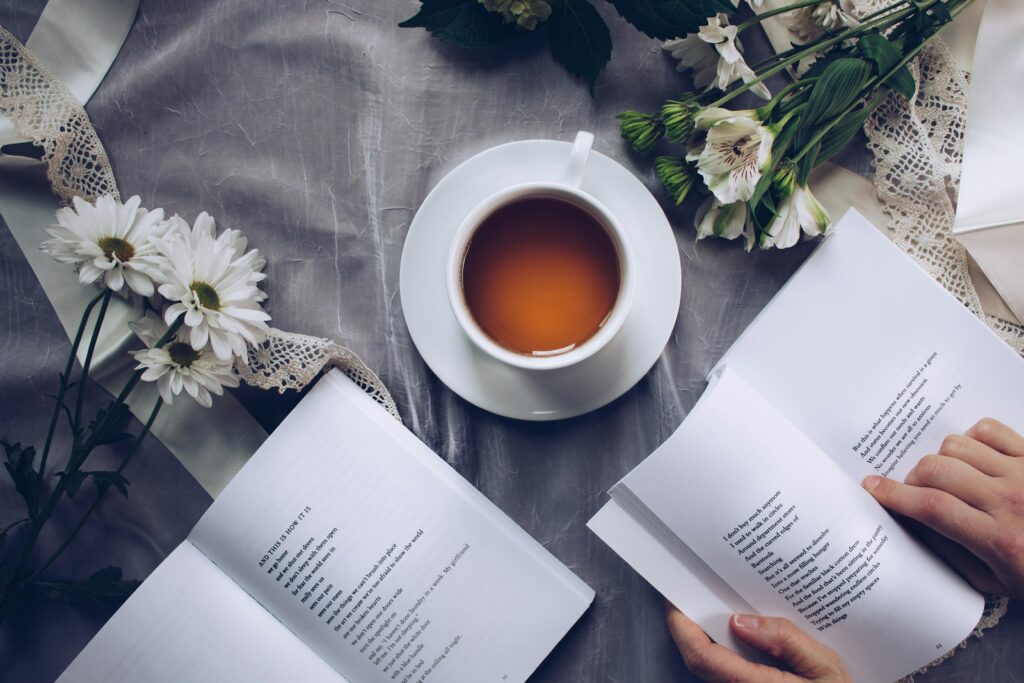

Conclusion
Enhancing Tea with Flavored Sugars
When it comes to sweetening tea, flavored sugars offer a unique and delicious twist that can take your beverages to the next level. By infusing sugar with herbs, spices, or extracts, you can add a whole new dimension of flavor to your tea-drinking experience. Whether you choose to create your own flavored sugars or opt for pre-made options, the possibilities are endless. So why not indulge in a personalized and indulgent tea break with these flavorful additions?
Tips to enhance your tea with the right sugar
To make the most of flavored sugars and enhance the taste of your tea, here are a few tips to keep in mind:
- Experiment with different combinations of herbs, spices, or extracts to find the flavors that suit your taste preferences.
- Allow enough time for the sugar to infuse with the flavors. Whether it’s a few days or a week, be patient and let the magic happen.
- Adjust the sweetness level by adding more or less flavored sugar to your tea, depending on your desired taste.
- Don’t be afraid to mix and match different flavored sugars for a unique and personalized blend.
Exploring and experimenting with different sugar options
When it comes to ready-made flavored sugars, there are various options available in the market. Some popular choices include:
- Vanilla sugar: Infused with natural vanilla bean, it adds a subtle and sweet vanilla flavor to your tea.
- Lemon sugar: The combination of lemon zest and sugar adds a refreshing citrus twist to your beverages.
- Ginger sugar: With a hint of spicy warmth, ginger sugar can bring a delightful kick to your tea.
- Rose sugar: Made with dried rose petals, it adds a delicate and romantic touch to your tea.
- Mint sugar: Perfect for refreshing herbal teas, mint sugar brings a cool and invigorating flavor to your cup.
With these options, you can explore and experiment with different flavored sugars to find the ones that complement your favorite teas.
In conclusion, flavored sugars provide an exciting way to enhance the flavor of your tea. Whether you choose to infuse your own sugar or explore pre-made options, these additions can elevate your tea-drinking experience to new heights. So go ahead, get creative, and discover the perfect flavored sugar to sweeten up your favorite cup of tea.
FAQ about Sugar with Tea: Sweetening Your Tea Right
Q: Should I add sugar to my tea?
A: Whether or not to add sugar to your tea is a matter of personal preference. Some people enjoy the added sweetness, while others prefer their tea without any added sugar. It’s all about finding the right balance of flavors that suits your taste buds.
Q: How much sugar should I add to my tea?
A: The amount of sugar you add to your tea depends on how sweet you like it. Start by adding a small amount, such as half a teaspoon, and gradually increase if desired. Remember to taste your tea before adding more sugar to avoid making it too sweet.
Q: What types of sugar can I use to sweeten my tea?
A: You can use various types of sugar to sweeten your tea, depending on your preferences. Common options include granulated sugar, brown sugar, honey, and artificial sweeteners like stevia. Experiment with different types to discover your favorite combination.
Q: How can I minimize the amount of sugar in my tea?
A: If you’re looking to reduce the amount of sugar in your tea, there are a few tricks you can try. Firstly, opt for natural sweeteners like honey or stevia, which can provide sweetness with fewer calories. Secondly, try gradually decreasing the amount of sugar you add to your tea to allow your taste buds to adjust. Lastly, consider adding flavor enhancers like lemon or mint to give your tea a burst of taste without relying solely on sweetness.
Q: Can I substitute sugar with other sweeteners in my tea?
A: Yes, you can substitute sugar with other sweeteners if you prefer. Artificial sweeteners like stevia or saccharin offer sweetness without the extra calories. However, keep in mind that they may have a slightly different taste compared to sugar. It’s always best to experiment and find the alternative that suits your palate.
Q: Are there any health concerns associated with consuming sugar in tea?
A: Consuming excessive amounts of sugar can contribute to various health issues, such as weight gain, tooth decay, and an increased risk of developing conditions like diabetes or heart disease. It’s important to be mindful of your sugar intake and try to find a balance that suits your health goals and preferences.
Q: Can I drink tea without adding any sweetener?
A: Absolutely! Many people enjoy the natural flavors of tea without any added sweetener. Tea can be a refreshing and delicious beverage on its own. If you’re looking to cut down on sugar or prefer a less sweet taste, try enjoying your tea plain or experiment with adding other flavors like lemon or herbs for a different twist.
Q: Is it okay to add milk to my tea if I’m also adding sugar?
A: Adding milk to your tea is a common practice and is a matter of personal preference. However, keep in mind that milk can alter the taste of your tea, especially when combined with sugar. It’s best to experiment and see if you like the combination of milk, sugar, and tea together.
In conclusion, whether or not to sweeten your tea with sugar is entirely up to you. Experiment with different amounts and types of sweeteners until you find the perfect balance for your taste buds. Remember to be mindful of your sugar intake and consider healthier alternatives if needed. Enjoy your sweetened tea in moderation!



Hey there! If you’re a fan of authentic Mexican cuisine, you’re in for a treat with Humberto Cruz at pointcafeny.com. They take immense pride in serving their customers with home-cooked, genuine Mexican dishes crafted with the finest ingredients. From flavorful salsa to mouthwatering tamales and enchiladas, they offer an experience that brings the taste of family food from back home right to your table. Don’t forget to check out their tempting Daily Specials for a delightful culinary adventure!
